How to provide safe and multifunctional wellhead devices for increasing oilfield production?
The technologies of oilfield stimulation measures include fracturing, acidizing, and fracturing and filling sand control, hydraulic oscillation plugging removal, sonic and ultrasonic wax and scale prevention, electromagnetic wax prevention, and microbial oil recovery.
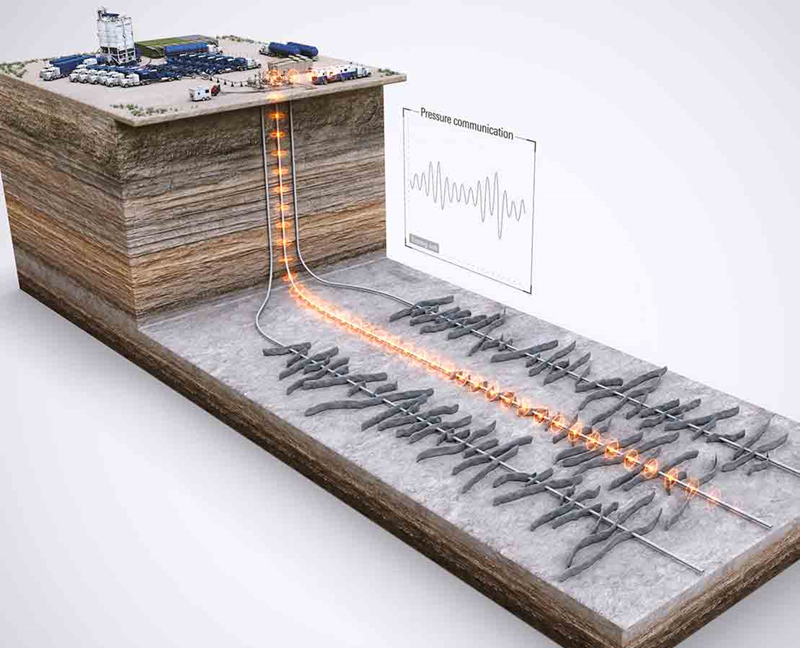
Oil well stimulation measures are technical measures taken to improve the production capacity of oil wells by eliminating damage near the wellbore or by creating structures with high conductivity in the formation.
The technologies of stimulation measures include fracturing, acidizing, and fracturing and filling sand control, hydraulic oscillation plugging removal, sonic and ultrasonic wax and scale prevention, electromagnetic wax prevention, and microbial oil recovery technologies developed in recent years.
The purpose of each stimulation technique is to increase production or reduce pressure drop.
Reducing the pressure drop can prevent sand production in the reservoir, water coning, and the transformation to condensate from the breakdown of the phase balance near the wellbore.
The above technologies used for oil well stimulation can also achieve the purpose of water injection well stimulation.
Used to fix the wellhead of the drilling well, connect the wellhead casing string, seal and control the annular space between the pipes, suspend the tubing, control the pressure of the wellhead and adjust the flow rate of the oil (gas) well, and the tubing that can induce oil to the wellhead It can also be used to close oil wells when necessary, and can also be used for special operations such as acid fracturing, water injection, and testing.
- It consists of three parts: casing head, tubing head, and production (gas) tree.
- Applicable to various casing, tubing procedures, and various connection methods.
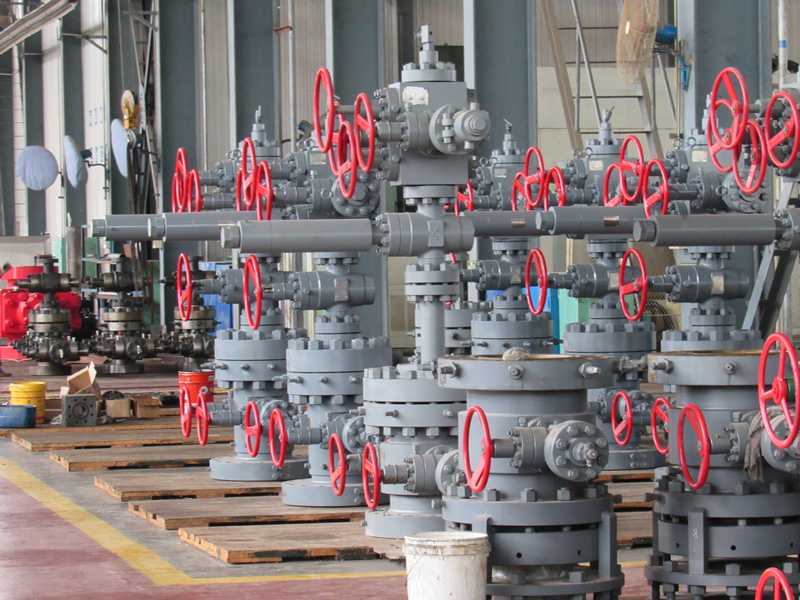
Multifunctional wellhead devices are mostly used in complex oil and gas wells and are an important part of well control devices for stimulation wells. At present, in view of the ultra-deep, ultra-thick, high-temperature, high-pressure, and high-hydrogen sulfide characteristics of some oilfields, the 250-type oil recovery wellhead currently in use mainly has three defects:
First, the pressure-bearing part adopts a casting process causing bubbles and inclusions are easy to exist, which affects safety;
Second, the height of the wellhead is higher, which reduces the effective height of the pumping unit;
Third, there are difficulties in site pressure testing and cumbersome operations, which are difficult to meet the needs of high-pressure water injection and heavy oil mixing water in the late stage of the oil field, as well as the viscosity reduction process well;
Fourth, the wellhead body is connected with the valve and the wellhead process with clamps, and there are many leak points.
During the later water injection or heavy oil reprocessing of the wellbore, the overall reliability of the wellhead is poor.
The existing new completion wellheads are BX160 flanges (7″ casing tie-back wells BX158 flanges). All are above the ground. If the 350-type pumping wellhead is installed after the transfer, the conventional 14-type walking beam pumping unit is used. ,
The foundation of the pumping unit will be too high, causing the pumping unit to shake, difficult to operate, and the dangers of the operators and the pumping unit system will be greatly increased; additional auxiliary equipment such as consoles will be added, which will invisibly increase the operating cost;
The 7” casing is not connected to the well, and the well site cannot perform pressure test on the BX158 flange. The source of well control risks increases.
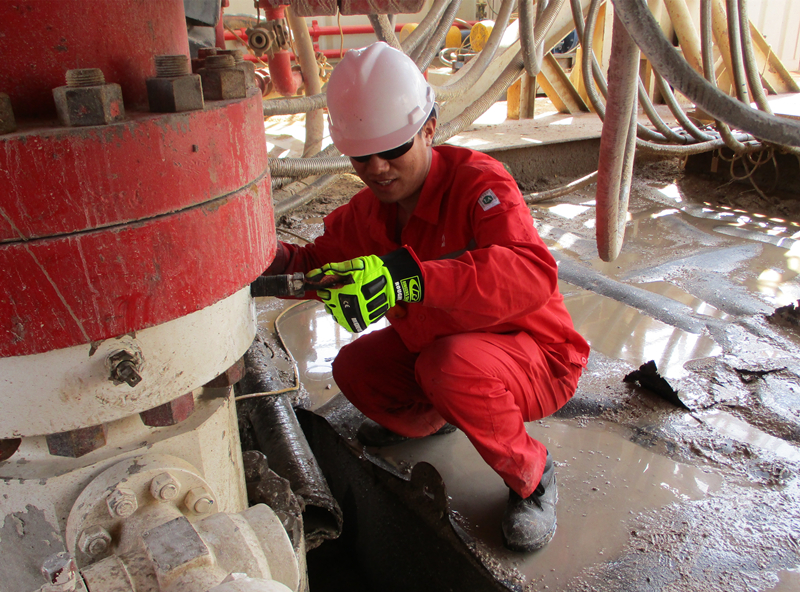
In view of the actual development needs of the above-mentioned oil and gas production and the deficiencies of existing equipment, in order to meet the operation requirements of oilfield stimulation measures, improve equipment safety, reduce well control risk sources, and improve the efficiency of the entire system, our company has developed a new type of multifunctional wellhead, and it is suitable for stimulation operation.
The wellhead device includes tubing head spool (1), first flat gate valve (2), plug (3), flange (4), hanger (5), gasket ring (6), plug (7), Pressure test port (8), connecting bolt (9), Christmas tree tee (10), lifting lug (11), plug (12), check valve (13), pressure gauge (14), second flat gate valve ( 15), the third flat gate valve (16) and other components.
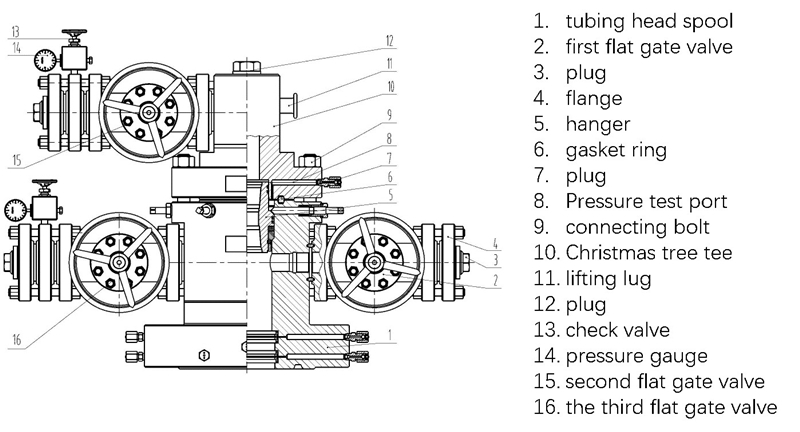
The upper end of the tubing head spool 1 is connected to the Christmas tree tee 10, and the connection between the tubing head spool 1 and the Christmas tree tee 10 is a studded structure, which effectively reduces the height of the wellhead. In addition, the bottom flange of the Christmas tree tee 10 in the present invention is also provided with a pressure test port 8, and a first plug 7 is installed in the pressure test port 8 for on-site pressure test.
In addition, a second flat valve 15 is installed on one side of the Christmas tree tee 10 and a lifting lug 11 is installed on the side to facilitate the lifting of the device.
The valve body of the first flat valve 2, the second flat valve 15, the second flat valve 16 and the Christmas tree tee 10 preferably use forgings to ensure the mechanical properties of each part, so as to meet the requirements of normal production while ensuring the safety and reliability of the operation of multiple production-increasing measures such as water injection, acidification and viscosity reduction and heavy oil mixing water.
When pressure test is required at the site, remove the first plug 7 and connect the pressure test pipeline to test the pressure; during conventional oil production operations, remove the second plug 12 above the Christmas tree tee 10.
The polished rod BOP and polished rod stuffing box are installed to realize normal operations; when high-pressure water injection or fracturing, acidification and viscosity reduction operations are required, close the polished rod BOP on the upper part of the Christmas tree tee 10 to achieve corresponding operations.
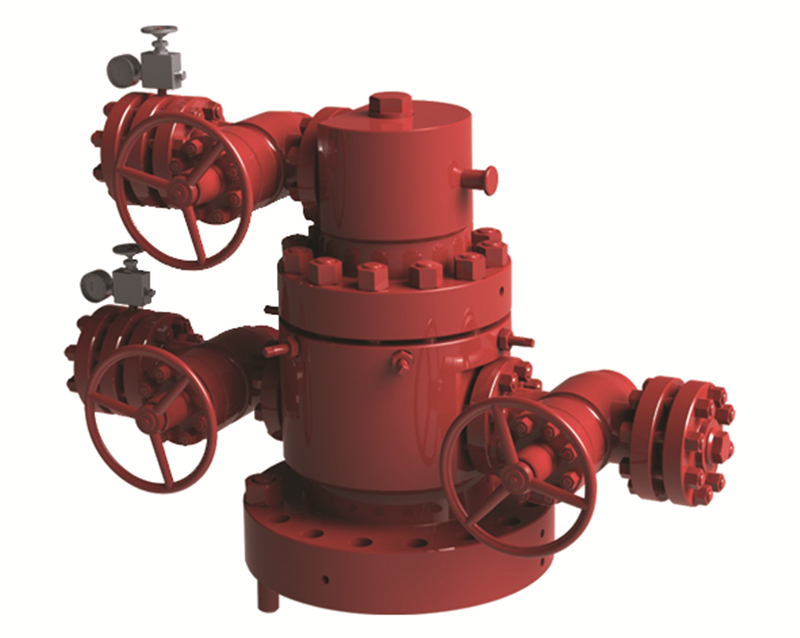
The successful application of the multifunctional wellhead device of the utility model not only effectively reduces the foundation height of the pumping unit, reduces well control risks, but also saves operating costs and material costs to a large extent.
This technological innovation is of great significance for the secondary operation of pumping wells with new wells transfered into production and high wellhead.

